Stage 4 Kidney Disease Diet
Living with chronic kidney disease stage 4 can be challenging. Diet plays an important role in managing the condition. Eating a well-balanced kidney diet plan that is tailored to address your specific needs as someone living with this chronic illness at this stage can help you maintain health, feel better, and have more energy throughout the day.
In this article, we'll explore how making dietary modifications based on individual needs can support those living with stage 4 kidney disease and give them the nutrition they need for optimal health.
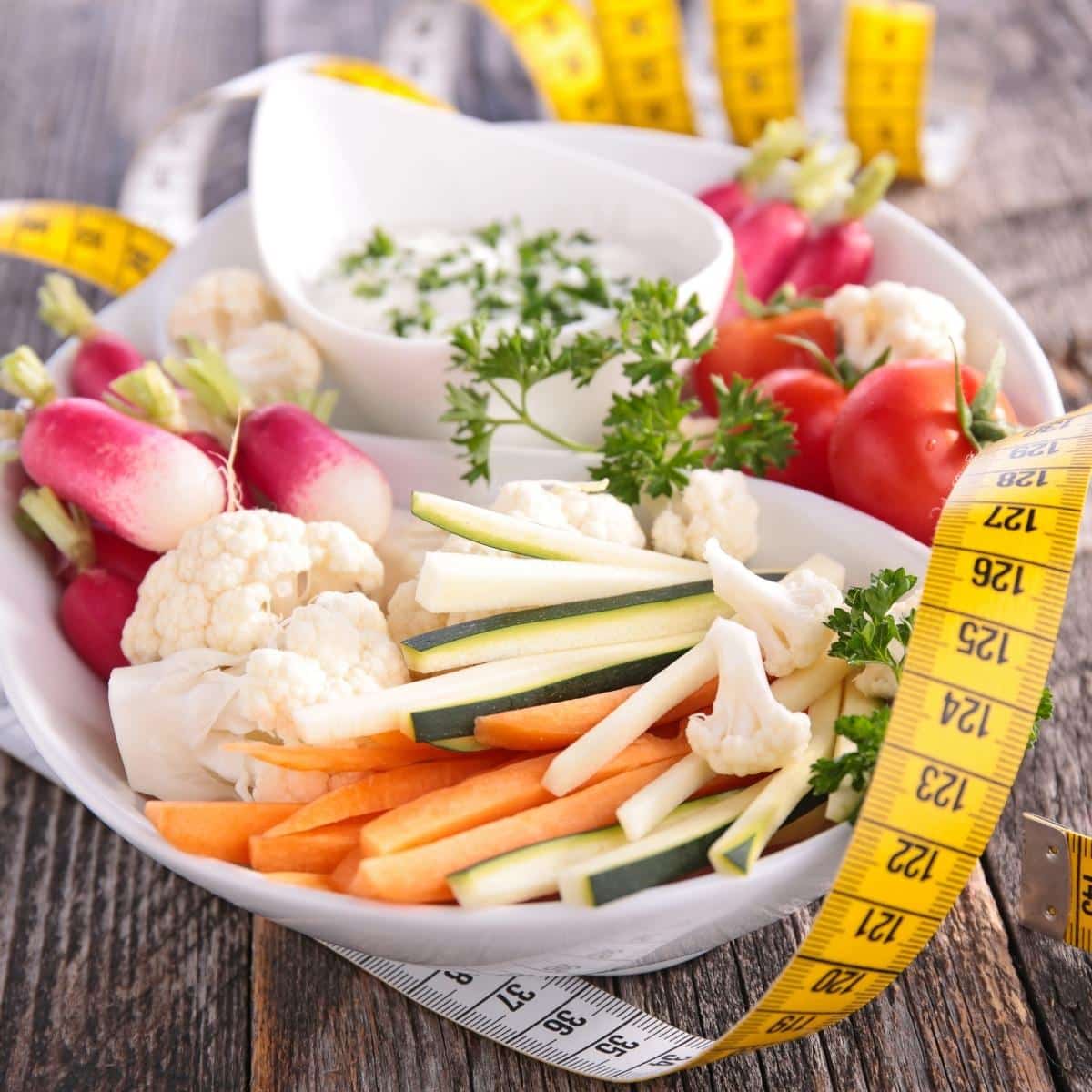
Every person's nutritional needs are unique, so it's necessary to consult with a healthcare provider before beginning any kind of new diet or dietary modification plan.
Your nephrologist (kidney doctor) will take into account your age, weight, body size, sex, and lifestyle when creating a kidney-friendly eating plan specifically designed to meet your body’s nutrient requirements at every stage of kidney disease.
Having access to information about what types of foods are best suited for people with kidney disease can be empowering. This will allow you to make informed decisions about what foods you should include in your daily meals to be healthy and keep further decline in kidney function at bay.
Jump to:
- Overview Of Kidney Disease
- Symptoms Of Stage 4 Kidney Disease
- General Nutrition Guidelines
- Weight Loss and Calorie Intake With Stage 4 CKD
- Diet For Stage 4 CKD
- Foods To Avoid
- Protein Intake Recommendations
- Low-Potassium Food Options
- Low-Phosphorus Food Alternatives
- Fluids And Beverage Restrictions
- Monitoring Blood Pressure And Sugar Levels
- Kidney Failure Stage 4 Diet FAQs
- At Stage 4 CKD, A Kidney-Friendly Diet Is More Important Than Ever
Overview Of Kidney Disease
Kidney disease is a condition that affects many people around the world. It's when your kidneys don't work as they should to filter waste and excess fluid from your body.
When kidney function drops below a certain level and persists, it can lead to serious health problems such as anemia, high blood pressure, heart failure, and even death. When you have these issues, you should seek out a kidney specialist, also known as a nephrologist.
Knowing what causes kidney disease can help you prevent or manage it more effectively.
The most common causes of kidney disease are diabetes and high blood pressure, but other conditions like lupus and HIV can also increase your risk for developing it.
Other factors include age, genetics, ethnicity, lifestyle habits such as smoking or drinking too much alcohol, and exposure to toxins in the environment.
To diagnose kidney disease, doctors typically perform physical exams and ask questions about family history before ordering tests such as urinalysis, blood tests, or imaging scans.
There are 5 stages of kidney disease. At stage 4, the kidneys function from 15-29 percent of the expected normal function. Further damage thus is imminent and diet should be restricted to its maximum, as much as possible.
A renal dietitian or nutritionist should work as care partners with your kidney doctor in order to ensure the most favorable kidney health.
Treating kidney disease depends on its severity. However, there are some things everyone with this condition can do to improve their quality of life.
These include following a following a pre-dialysis renal diet that is low in sodium and fat while...
- Increasing intake of fruits and vegetables
- Exercising regularly; quitting smoking
- Managing stress levels
- Avoiding over-the-counter pain medications
- Taking prescribed medications (if any)
- Staying hydrated by drinking enough water each day
- Seeing a kidney specialist regularly for checkups
- Getting adequate sleep every night
- Limiting alcohol consumption.
Taking these steps will help keep your kidneys functioning properly so you can live a healthier life overall.
For More Recipes and Ideas --->> Get Your Free Meals and Recipes That Are Perfect for Pre-Dialysis Diets, Pre-Dialysis with Diabetes, or Dialysis Diets.
Symptoms Of Stage 4 Kidney Disease
It's time to explore the signs and symptoms of Stage 4 Kidney Disease. This among the stages of kidney disease is marked by a severe reduction in kidney function, leaving many struggling with how best to manage their health. From here on out, you'll also be following a stage 4 kidney disease diet.
The key renal failure symptoms associated with this stage are:
Impaired waste removal: The kidneys play an important role in removing toxins from the body through urine. As kidney damage progresses, these vital detoxifying functions may be impaired.
- Urine output decreases as well as its ability to dilute toxins
- High levels of creatinine and urea accumulate in the blood due to decreased filtration rate
Imbalanced electrolyte levels: Electrolyte imbalances become more likely as Stage 4 CKD develops as the kidneys are unable to keep nutrients at healthy levels.
Sodium, potassium, calcium, magnesium, and phosphate can all become dangerously low or high compared to normal blood levels depending on the individual’s situation.
- Low sodium levels lead to confusion and fatigue
- Elevated potassium concentrations can cause irregular heart beats
- Impaired calcium absorption disrupts nerve signals
Other common kidney failure symptoms include exhaustion, trouble sleeping, swelling of hands and feet, dry skin, itchy skin, and muscle cramps. In some cases, chronic pain may develop that requires medical attention for proper management.
Stage 4 CKD can also affect other organs outside of the kidneys leading to complications such as cardiovascular disease or anemia if left untreated.
It's important not only to understand your own risks but also keep track of any changes you experience over time so that appropriate medical care can be provided when necessary and your kidney doctor can provide excellent guidance.
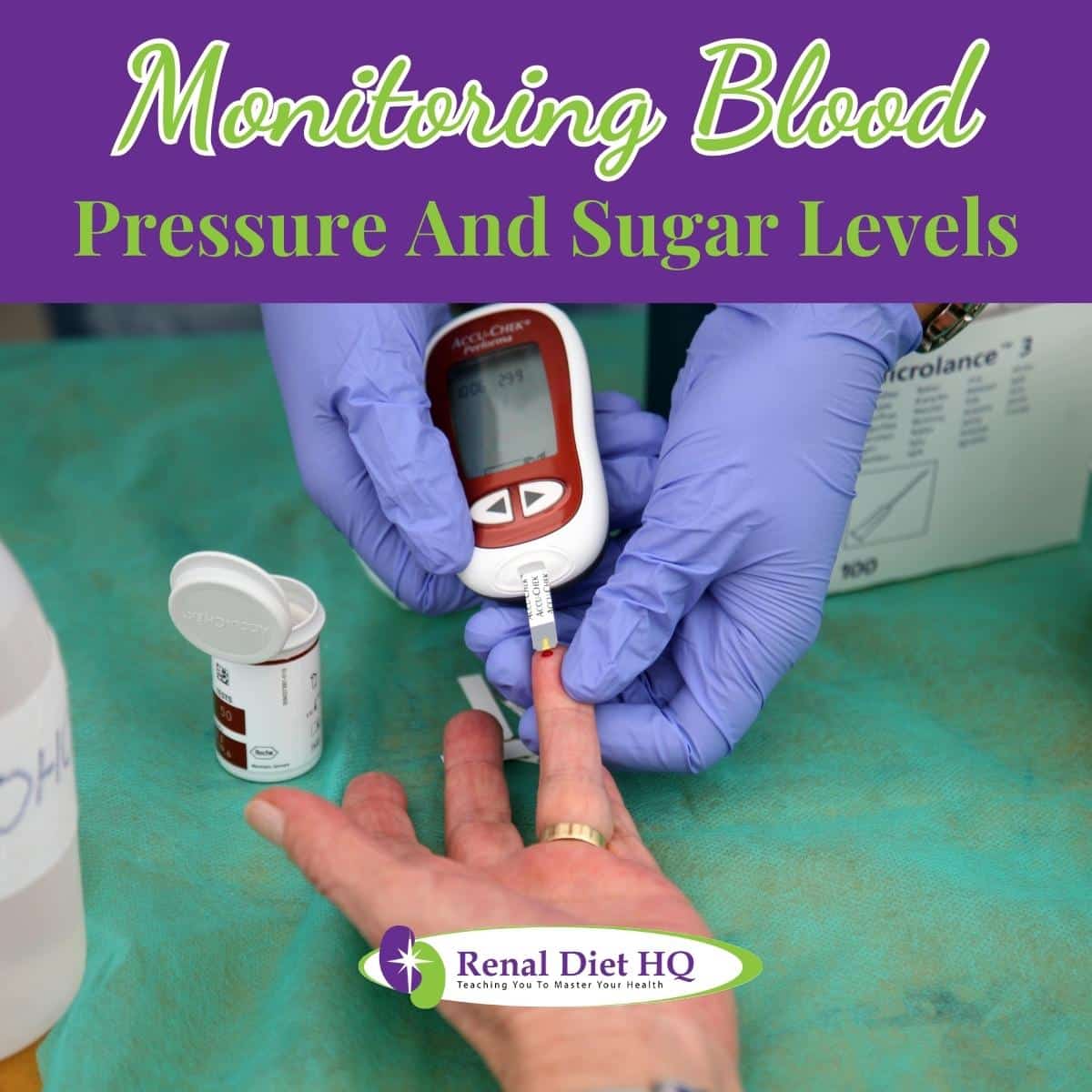
General Nutrition Guidelines
Nutrition is an essential part of managing stage 4 kidney disease. In order to ensure optimal health for those with chronic kidney disease (CKD), it's important to follow a diet that provides enough energy and nutrients while minimizing the strain on your kidneys.
A balanced, kidney-friendly eating plan should include foods that are low in sodium, potassium, phosphorus, saturated fat and cholesterol.
It's also important to drink plenty of fluids while following a CKD food plan. There are plenty of fluids to hydrate with kidney disorder.
However, you may need to limit or avoid certain types depending on your individual situation. For example, if your condition is advanced and you have difficulty controlling fluid retention, then limiting fluids can help reduce swelling and other symptoms.
Otherwise, it's generally recommended to aim for 6-8 cups per day unless instructed otherwise by your health care provider.
Finally, staying active is key when following a stage-4 nutrition plan for CKD management. Moderate exercise such as walking can improve circulation and lead to better overall health outcomes.
Consulting with your doctor about what type of exercise would be best for you depending on your activity level or presence of problems like neurological conditions or muscle weakness can help you find a suitable routine.
With some effort and determination, having adequate nutrition along with regular physical activity will promote healthy living despite being diagnosed with kidney disease.
Weight Loss and Calorie Intake With Stage 4 CKD
In order to achieve not only optimal kidney health but overall health as well, calorie intake should be monitored as part of a meal plan. In protein restriction itself, a patient on a CKD stage 4 diet can suffer weight loss due to a decreased supply of calories from protein.
Adding more protein when this condition occurs may risk kidney health. Thus, consulting your nutritionist care partner on a regular basis will help a lot in controlling calorie intake and ensuring you have the best kidney health possible as you prepare for dialysis.
One of the best ways to avoid weight loss on the renal diet is to adjust carbohydrate and fat intake. In this way, calorie intake will be increased and weight loss is avoided to a certain extent.
If protein needs to be adjusted due to muscle loss, always seek professional advice.
On the other hand, weight loss can be an important factor for improving the health of some people living with stage 4 CKD and eating a diet for stage 4 CKD.
However, dieting for a person with this condition is different from dieting for someone without kidney disease; it requires careful consideration of nutritional requirements and fluid intake.
The following table offers helpful tips on how to manage weight loss in stage 4 CKD:
| Tips | Description | Examples |
| Eat nutrient-dense foods | Choose meals that provide many nutrients while being low in calories (e.g., lean meats, fish, eggs) | Lean ground beef, salmon filet, boiled egg whites |
| Avoid high sodium foods | Foods high in sodium cause extra fluid retention which can lead to swelling or edema. Reducing salt intake by using salt substitutes helps reduce this symptom. | Canned soups and vegetables, processed meats like bacon or cold cuts, frozen dinners |
| Limit fluids & beverages | Fluid restrictions are often recommended due to decreased kidney function as well as to minimize edema symptoms. Water should still be consumed regularly but other sources such as juices may need to be limited if needed. | Reduce consumption of beer/wine/alcoholic beverages, limit juice intake (1 serving max), choose decaffeinated options when available |
By implementing these tips into their daily routine, individuals with stage 4 CKD can begin taking control over their health again through mindful eating habits.
Eating healthy does not have to mean deprivation; instead focusing on making small changes by selecting healthier food choices can help make sustainable progress towards improved wellbeing.
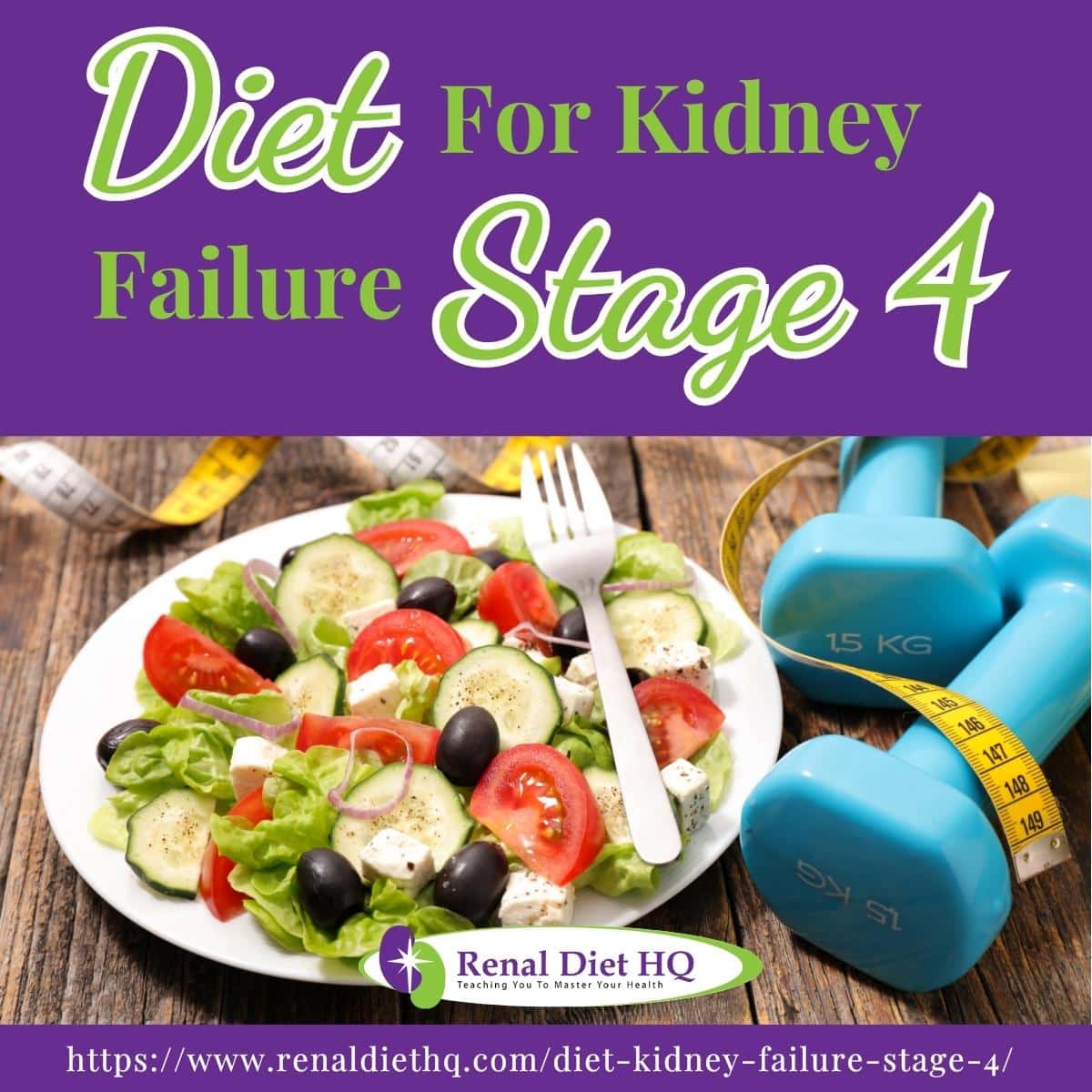
Diet For Stage 4 CKD
It's essential to tailor your diet so that your body gets all of the nutrients it needs without putting too much strain on your kidneys. A stage 4 CKD diet should be rich in fruits and vegetables and low in saturated fat, salt, and sugar.
Eating plenty of legumes, lean proteins like fish and chicken, whole grains, nuts and seeds are also recommended.
Additionally, drinking the right amount of fluids (fluid restricted diet menu) throughout the day without going overboard is imperative as this can help reduce waste buildup in the bloodstream.
Lastly, supplementing with vitamins and minerals may be necessary depending on any additional health problems or dietary restrictions one may have.
When planning out meals for those with a stage 4 CKD diagnosis, there are several things to keep in mind. Aim for smaller portion sizes since large servings can put extra stress on the kidneys. Additionally, try to space out meals over time instead of eating them all at once.
Furthermore, consulting with a registered dietitian who specializes in kidney diets can provide personalized guidance tailored towards an individual's needs. This is especially beneficial if following certain ethnic cuisines which often contain high levels of sodium or potassium.
By creating an appropriate healthy eating plan incorporating foods that fit within these guidelines while satisfying one's own tastes and preferences will ensure they get all the nutrients they need while reducing strain on their kidneys.
Foods To Avoid
Stage 4 kidney disease requires special attention to diet, as the kidneys are no longer able to effectively process certain food substances.
To help maintain a healthy lifestyle, here’s three key foods to avoid when managing Stage 4 CKD: - Large servings of red meat - Processed Foods - Sodium rich & sugar laden items
These types of food put strain on the body and can cause further damage to the already weakened kidneys. Instead, eating meals with plenty of fresh vegetables and complex carbohydrates will provide much needed vitamins and minerals while helping reduce stress on the kidneys.
Additionally, it's wise for those with Stage 4 CKD to limit their salt intake and check nutrition labels before consuming any food item. This ensures they won't be unknowingly ingesting excess amounts of sodium or sugar which could worsen symptoms. Eventually, you will learn how to season food without salt.
By avoiding these unhealthy options and being mindful of what they eat, stage 4 CKD patients can still enjoy delicious meals without having to worry about aggravating their condition.
Keeping a balanced diet is an important part of maintaining overall health while living with Stage 4 Kidney Disease.
Protein Intake Recommendations
For people with stage 4 kidney disease, it’s important to monitor their daily protein consumption. A low-protein diet may be recommended by doctors if there are signs that the kidneys are not functioning properly or if they want to slow progression of the illness.
Generally, a person should consume between 0.6 - 0.8 grams of protein per kilogram of body weight per day when on a low-protein diet. However, your healthcare team can provide more specific advice tailored towards an individual's needs.
Eating fish, egg whites, and other non-meat proteins such as tofu, nuts, seeds and legumes are good options for those who cannot eat meat due to dietary restrictions related to their health condition.
Having too much protein in one’s diet has also been linked to what's known as ‘dietary acid load’ which contributes to bone mineral loss in individuals with advanced kidney disease.
In order to remain healthy while getting sufficient amounts of energy from food sources like proteins, carbohydrates and fats – monitoring one’s macronutrient balance is key!
It is therefore important for patients with stage 4 kidney disease to get advice from medical professionals regarding appropriate levels of protein intake so they can maintain their overall wellbeing without compromising on essential nutrients found in these types of foods.
Popular choices include lean meats such as chicken breast or turkey mince; dairy products like yogurt and cheese; eggs; seafood like salmon or shrimp; nuts & seeds; whole grains such as quinoa; beans & lentils; soy products like tempeh and edamame beans; nut butters and fortified plant milks like almond milk (almond milk side effects on kidneys).
Hence, understanding how much protein a patient requires during treatment for stage 4 kidney disease is critical for managing this condition effectively over time. This doesn’t mean completely eliminating protein sources; just choosing the healthier ones.
Low-Potassium Food Options
When it comes to stage 4 kidney disease, diet plays a huge role in managing the condition. Avoiding high-potassium foods has long been the dictum in a renal diet. Potassium is restricted from 2000 to 3000 mg daily.
Take note that potassium levels may increase dramatically when not restricted in stage 4 kidney failure and may cause fatal results such as heart attack if not strictly monitored.
Low-potassium food options are essential for maintaining good health and wellbeing. Here we'll outline some of the best low-potassium recipes, meals, and snacks that can be enjoyed by those with kidney disease. Check out this low potassium diet for kidney disease.
| Low-Potassium Food Ideas | Low-Potassium Recipes | Low-Potassium Meals & Snacks |
| Lentil Soup | Baked Salmon | Tea |
| Boiled Egg | Quinoa Salad | Applesauce |
| Chicken Breast | Roasted Vegetables | Greek Yogurt |
| Cauliflower Rice | Grilled Cheese Sandwich | Hummus and Veggies |
When cooking low potassium recipes, make sure to season lightly using herbs such as basil, oregano, parsley, thyme or garlic powder.
Also try adding a bit of citric acid like lemon juice or vinegar instead of adding table salt which can lead to excess sodium levels.
There’s also plenty of excellent ready prepared meal ideas available from supermarkets which are specifically designed for people on restricted diets due to chronic illnesses such as kidney disease.
A few examples include vegetable stir fry with brown rice or couscous salad with grilled chicken. Make sure to read the food labels first before buying these.
Additionally, there's an abundance of delicious snack foods that don't contain excessive potassium levels such as popcorn, crackers, and unsalted nuts.
Living with stage 4 kidney disease doesn't mean you have to miss out on tasty foods. With careful planning and mindful eating habits there is still room for variety in your kidney diet so long as you choose wisely when it comes to selecting suitable low-potassium food ideas, recipes, meals, and renal diet snacks.
Low-Phosphorus Food Alternatives
For those with stage 4 kidney disease, understanding the concept of keeping the levels of phosphorus in check is essential to living healthily and avoiding serious complications from their condition. Get a closer look at low phosphorus foods.
Limit phosphorus from 800 to 1000 mg daily. When not monitored accordingly, phosphorus may remain in the body and cause a cascading effect of poor calcium absorption.
This will, in turn, lead the parathyroid hormone to affect the release of calcium and phosphorus from bones. Without phosphorus restriction, the overall effect on bones, heart, and blood vessels may be devastating.
Fortunately, there are plenty of delicious recipes that can be crafted within these restrictions. With some creativity in the kitchen, meals without excess levels of phosphorus don't have to feel restrictive or boring! Here's a list of options available:
- Fruits & Vegetables : Apples, pears, oranges, bananas, carrots, green beans and kale provide excellent sources of nutrition without added phosphorus.
- Grains : Rice (brown rice or wild rice instead of white rice), bran cereals, bran breads, and oats are great grains that provide complex carbohydrates sans the phosphorus content found in wheat products such as white bread and pasta. Quinoa is also an increasingly popular option due its high protein content.
- Protein Sources : Fish, poultry and eggs all make good choices when it comes to creating balanced meals free from added phosphates. Eating legumes such as lentils or chickpeas is another way to increase fiber intake while staying away from foods rich in phosphorus content.
Making dietary changes need not be daunting; with a few simple swaps here and there, one can create enjoyable dishes without compromising on flavor or nutritional value.
By following this advice carefully you can enjoy preparing tasty yet safe phosphorus-reduced recipes so you can live well despite your condition!
Fluids And Beverage Restrictions
When diagnosed with stage 4 kidney disease (CKD), it is important to be mindful of fluid balance and beverage restrictions. In order to maintain proper hydration and avoid fluid overload, individuals must limit the amount of fluids they consume each day. This includes both water and any other liquids such as milk, juices, or sports drinks.
Generally speaking, adults should aim for two liters of total fluids per day - though individual amounts may vary depending on personal health factors. The amount of fluid allowed per day may be even less for patients with late stage CKD.
It's also essential to pay attention to sodium levels in beverages and other liquids. Individuals with CKD should avoid consuming salty fluids like broth-based soups and soft drinks that are high in sugar content.
Instead, focus on drinking plain water along with unsweetened tea or coffee without added sugars. These types of beverages can often provide much needed hydration while still keeping within daily fluid limits recommended by a doctor. Here are some other fluids to hydrate with kidney disease.
The importance of following dietary restrictions when dealing with stage 4 CKD cannot be overstated. With careful monitoring and consistent adherence to recommendations from healthcare professionals, individuals can live healthier lives despite having a chronic illness like kidney disease.
Monitoring Blood Pressure And Sugar Levels
Blood pressure and sugar level monitoring are key components of any successful plan for living with CKD at this advanced stage. Hypertension and diabetes can cause and are often comorbid conditions of chronic kidney disease, hence, one must be vigilant enough so that these parameters are kept within a healthy range.
Keeping these conditions under control can mean preventing progression of kidney disease going forward.
To begin, let’s discuss the importance of regular blood pressure checks. High blood pressure is especially dangerous for those suffering from CKD because it can lead to further damage to the kidneys.
Therefore, keeping an eye on your numbers and taking blood pressure medications if necessary should be part of your daily routine.
Additionally, many people find that making lifestyle changes such as exercising more often helps them maintain healthy readings and improve heart health over time.
Next up is blood sugar level monitoring which is vital for anyone with stage 4 CKD, since diabetes has been linked to accelerated progression of the condition. Monitoring your glucose levels requires you to take measurements multiple times each day and adjust diet and exercise habits accordingly.
While doing so may feel like an inconvenience at first, understanding what makes healthy readings will empower you to make better choices along your journey towards optimal health management. Overall, it is important to always be guided by your doctor when it comes to checking your blood glucose levels or changing your diet.
Monitoring both blood pressure and sugar levels must become second nature for those who want to effectively manage their stage 4 kidney disease in the long run – no matter how difficult or inconvenient it might seem initially!
Kidney Failure Stage 4 Diet FAQs
Long-term effects of kidney disease can be serious, as it is a chronic illness. People living with kidney disease face a range of physical and emotional issues that can last for years if not managed properly.
Kidney disease progresses slowly over time, leading to renal failure if left untreated. It’s important to understand the impact this condition has on individuals in order to identify effective treatments and reduce risk factors. There is also a renal failure diet to follow.
The long-term effects associated with kidney disease are numerous and include fatigue, anemia, nerve damage, high blood pressure, heart disease, skin disorders, poor appetite, difficulty concentrating, sleep disturbances, and depression.
In addition to these physical symptoms there may also be psychological distress due to changes in lifestyle such as dietary restrictions or dialysis treatment requirements.
Additionally, people with end stage renal disease will require either ongoing dialysis or a kidney transplant in order to survive. Tips on how to avoid end stage renal disease.
The development of complications of kidney disease can have a significant effect on quality of life.
Early diagnosis and proactive management of the condition is essential for those affected by it in order to ensure better outcomes and fewer long-term health risks.
Treatment options often involve lifestyle modifications such as diet changes and exercise along with medications to help manage specific symptoms or conditions related to the disease.
Managing any underlying causes is also important for reducing further progression of kidney dysfunction which could lead to more severe medical consequences down the line.
Though not all natural remedies will work for everyone affected by stage 4 kidney disease, many sufferers have found solace in diet-based methods such as herbs, supplements and lifestyle changes.
Herbs such as turmeric, ginger and cinnamon may reduce inflammation and support healthy blood pressure levels while also providing antioxidant benefits that can protect against cell damage.
Additionally, certain dietary supplements including omega-3s, probiotics and vitamin D may combat oxidative stress caused by free radicals which is associated with accelerated aging in people with kidney issues.
In terms of adjustments to one's daily routine, reducing salt intake whilst increasing fluid consumption has been shown to benefit individuals with chronic renal failure.
It is important to remember that these measures should only serve to supplement existing treatment plans prescribed by medical professionals; never replace them entirely without consulting your healthcare team, including your doctor first.
Although finding a balance between traditional treatments and alternative therapies can seem daunting at times, it doesn't have to be an impossible task.
Hand-in-hand, medical management and natural remedies can help make you feel your best, even at late stage kidney disease.
When it comes to kidney disease, a kidney-friendly diet is a critical component. As the condition progresses and different stages are reached, there can be significant differences in what type of diet should be followed.
The question then arises as to whether or not there is a difference between stage 3 and stage 4 kidney disease diets.
The progression of symptoms for CKD means that changes must occur to one's diet over time. For those at stage 3 of chronic kidney disease, their diet will focus on limiting their intake of sodium, phosphorus, potassium, and protein while increasing fiber consumption.
This might include avoiding processed foods which contain high amounts of salt, sugar and saturated fat along with eating more fruits and vegetables for vitamins and minerals instead.
Stage 4 brings about even further dietary limitations due to deteriorated functioning of the kidneys. Protein levels need to be reduced significantly as this tends to worsen overall symptoms associated with this stage of kidney disease such as fatigue, nausea, and poor appetite.
Furthermore, fluids may also have to be limited depending upon individual circumstances since too much fluid intake can put strain on damaged kidneys leading to an increase in blood pressure or swelling around the body.
Therefore, it is important for those affected by this condition to monitor their intake carefully and adjust accordingly.
Overall, when considering a diet suitable for someone suffering from kidney disease it is necessary to take into account where they are in terms of progression as each stage carries its own unique set of requirements regarding what types of food should be consumed or avoided in order for them to manage their health effectively.
It is therefore essential that patients understand these distinctions and be guided accordingly by their healthcare provider.
Across all kidney disease stages, lifestyle changes are essential. Exercise, hydration, stress-management, and nutrition all play key roles in kidney well-being.
Here is a list of ways that these lifestyle modifications can make a difference:
1. Exercise - Regular exercise helps reduce blood pressure levels, increases circulation to the kidneys, reduces cardiovascular risk factors, and helps maintain a healthy weight
2. Hydrate - Drinking plenty of water throughout the day keeps your body properly hydrated, which improves overall kidney functioning.
3. Stress Management - Stress has been linked to an increased risk of developing chronic kidney disease as well as other conditions associated with poor kidney function.
Taking time for yourself to relax or practice mindful activities like yoga can help improve your mental wellbeing while reducing physical strain on the kidneys simultaneously.
4. Nutrition - Following a stage-appropriate healthy diet with healthy foods can help provide nourishment for the body without overworking damaged kidneys, or causing unwanted accumulation of toxins.
Making these small but impactful adjustments to our daily routine can create lasting results when it comes to keeping our kidneys strong and healthy!
When it comes to slowing the progression of kidney disease, many people are surprised to learn that there is potential in their diet.
Certain foods can be beneficial for those with renal issues and have been known to help slow down the damage inflicted on kidneys due to this condition.
Here's a brief look at some of the best foods for kidney disease sufferers:
1. Fruits and vegetables rich in antioxidants like blueberries, strawberries, tomatoes and spinach
2. Whole grains including oats, barley, quinoa and brown rice
3. High-quality proteins such as fish, eggs, beans, nuts, and lean meats
These foods provide important nutrients that support healthy kidney function while also helping reduce inflammation which often contributes to further damage caused by the illness.
Additionally, they offer natural remedies when combined with lifestyle changes that may include reducing sodium intake or limiting fluid consumption if necessary.
The key here is balance; eating too much protein could put extra strain on your already weakened kidneys so aim for moderation with every meal.
Also consider supplementing essential vitamins and minerals if possible — check with your doctor first as certain supplements may not be suitable depending on your particular case.
By focusing on nutritious meals made from whole ingredients and monitoring portions throughout each day you'll be taking steps towards better health overall - not just healthier kidneys! Make sure you are also taking the time to learn about reading nutrition facts labels with CKD.
At Stage 4 CKD, A Kidney-Friendly Diet Is More Important Than Ever
Living with stage 4 kidney disease can be a difficult journey. It's important to remember that there are still many things you can do to improve your health despite having advanced kidney disease.
Eating the right foods and making lifestyle changes such as reducing stress levels and getting regular exercise can help slow down the progression of this condition.
While it may seem overwhelming at first, having the proper kidney diet coupled with other healthy habits will help keep you on track for long-term success.
With the right dietary guidance and optimal medical management from your healthcare team, you can journey through life with stage 4 kidney disease diet.


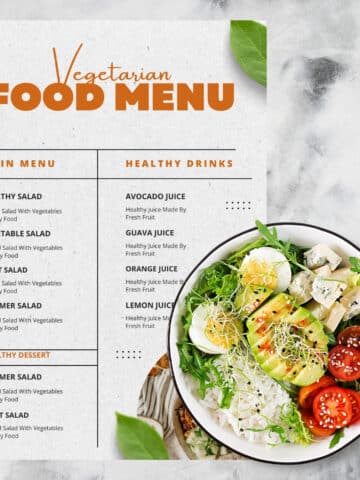
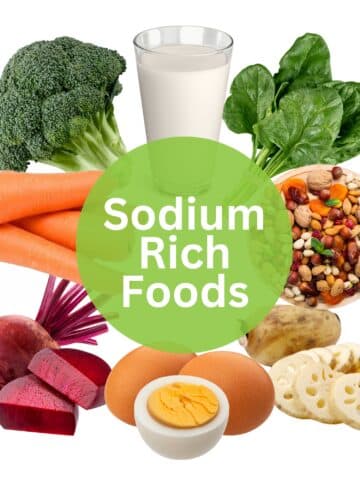
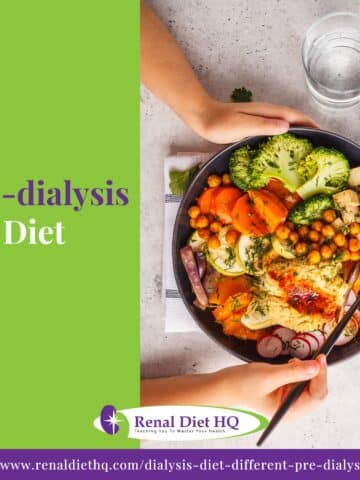
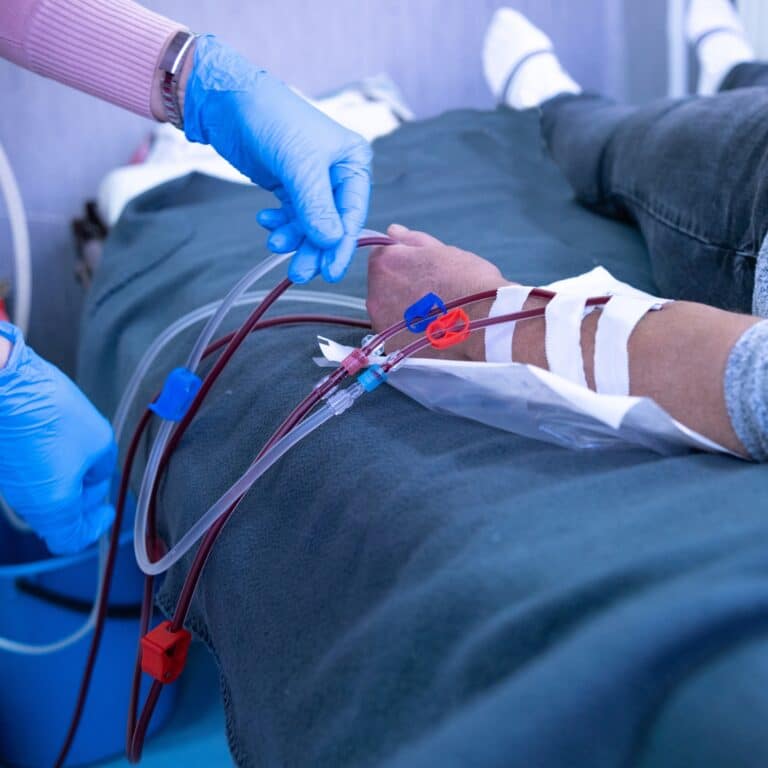
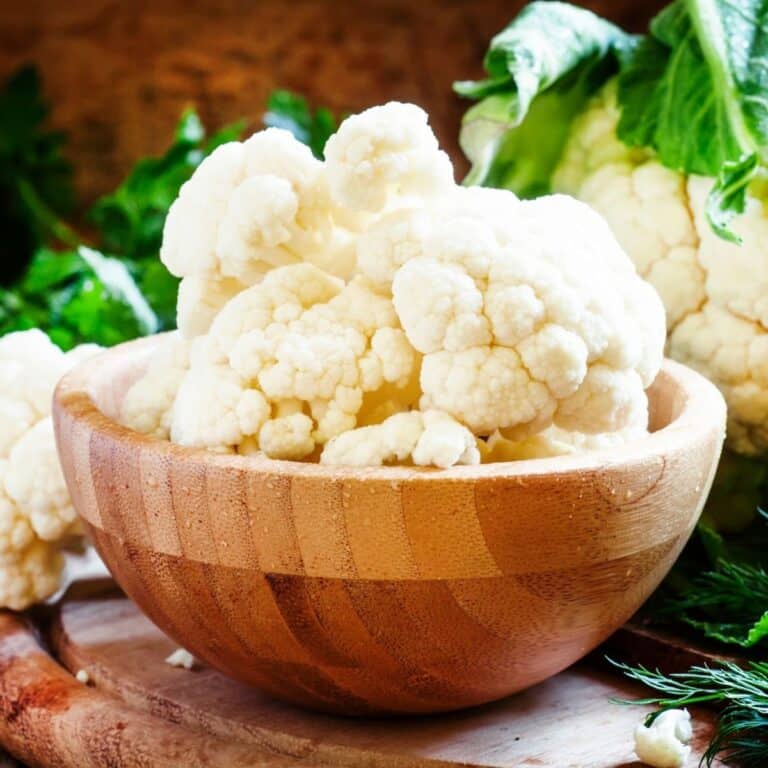
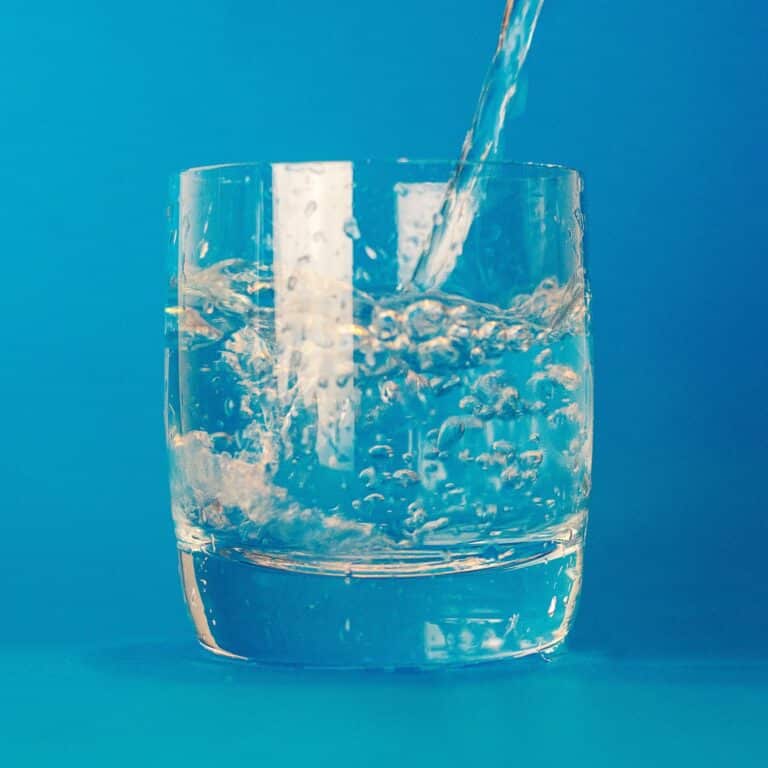
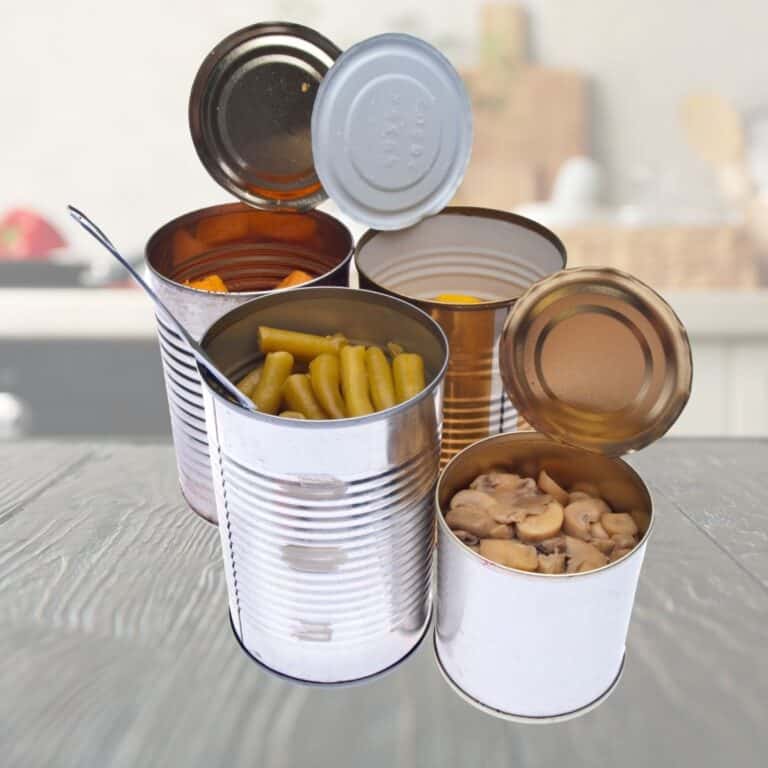


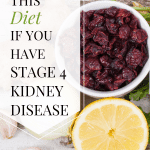
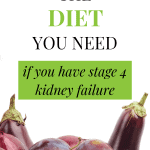


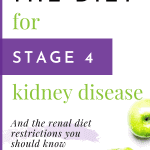



Sample diet menu
Research is ongoing and promising pointing in the direction that celery could lower
your blood pressure and at the same time block
tumor cells from growing in your body. Another tip on how to lower blood pressure is to increase the amount of water you drink.
A needle is then inserted into the chosen vein, where a syringe or airtight vial collects enough blood for the test.